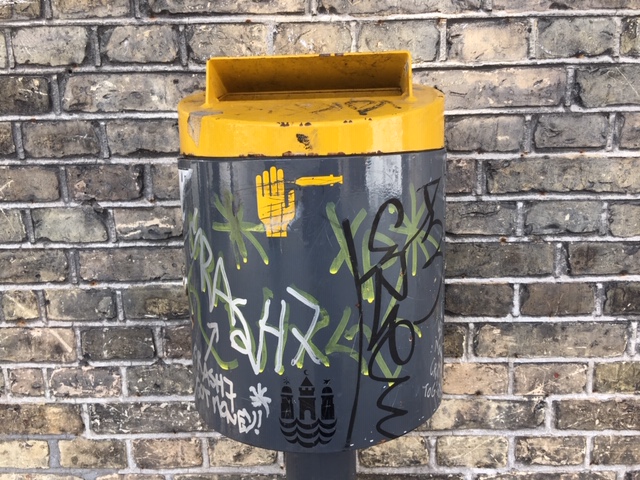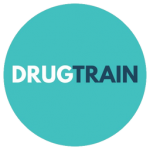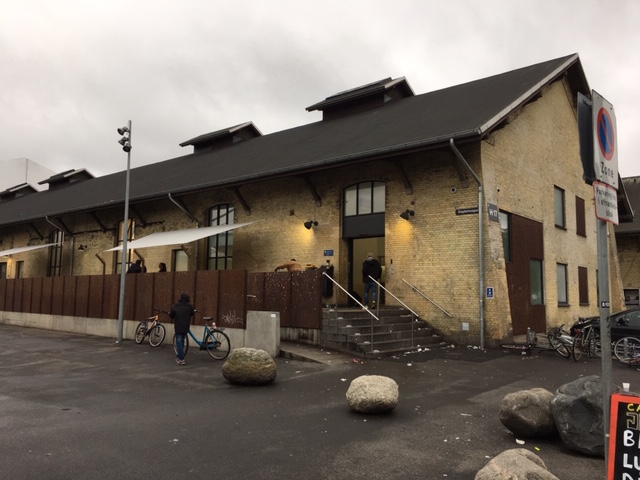DCRs in Denmark. Reflections on visiting Danish Harm Reduction services.
Over the last few days I have been fortunate to spend some time in Denmark & took the opportunity to visit some Danish drug treatment & Harm Reduction services.
I was in Denmark as i have just embarked on the European masters in drug & alcohol studies (EMDAS) with Middlesex university.
This is a course that brings together 4 European universities and learners from various countries.
‘Users House’
The induction week was in Aarhus, Denmark’s second largest city and home to a range of drug treatment services that include Heroin Assisted Treatment as well as a strong drug user community.
We were taken on an unfortunately named ‘poverty walk’, which I think got slightly mistranslated, by a woman from the drug user community who told us about life as a street drug user from her perspective.
We were shown the ‘users house’ a service that provides hot food and showers as well as a place to escape the cold winter weather.
This service was funded by sale of a newspaper and was effectively a user led community with a strong element of self policing by older respected peers and a strong community ethos, when we were there people from the community were out on local streets litter picking.
Drug Consumption/Overdose prevention site
A short distance from here we were shown the Drug Consumption/Overdose prevention site.
A gazebo and a couple of portacabins on the edge of large car park provided a safe space for people to inject or smoke drugs with metal fencing to conceal them from the general public.
We didn’t get to engage with any of the people using the site and it was difficult to ascertain much more information, although from what I could gather the site was user led but supported by the local drug treatment outreach team who provided Naloxone training and Harm Reduction advice.
Methadone Clinics
Later we visited one of the methadone clinics, a service that catered for approx 60 people per day, described by the worker we met as ‘ the most marginalised in Aarhus’.
As well as methadone the service offered clean injecting equipment, access to support from social workers, internet access, food & gym equipment.
There was zero tolerance for ‘street behaviours’ but even those banned could still access their methadone script from outside the building via a hatch.
What struck me most about this service was the environment. It felt clean and welcoming, with flowers on the tables and even the service users dogs allowed into the building with them ( dog food provided.)

H17 – the largest DCR in Europe
Moving onto Copenhagen I am very grateful to Stephen Malloy from European Network of People who use Drugs for connecting me with Dr Henrik Thiesen who has worked with the drug using community in Copenhagen for 25 years and been involved with DCRs since they were established and is now the Dr for the largest DCR in Europe, H17.
H17 was established in 2016 in an old storage warehouse in the former meat packing district of Copenhagen, now one of the hipster areas of the city with many bars & restaurants.
From the outside the building looks unremarkable and it might only be the groups of people congregated on the steps and veranda outside that might alert the casual observer to its purpose.
Inside the building has been completely modernised with glass walls, gleaming ceilings and a well designed lay out to cater for the up to 600 visitors a day who come to the service to use illicitly obtained drugs, the drugs remain illegal but the police choose not to enforce drug laws in the immediate vicinity of the service. Most people accessing the facility are smoking their drugs and the main drug of choice is Cocaine & Crack followed by opiates and people injecting methadone.
The smokers use a communal smoking room, described by Henrik as sometime felling a little like a ‘party room’.
The injecting rooms area much calmer and relaxed environment.
There are two rooms for injectors each holding six people and a nurse who can observe the injecting process, offer advice but will never become directly involved.
Importantly the nurses are able to respond immediately to Overdose situations, administering Oxygen & Naloxone.
Overdoses reversed
I wasn’t clear about the exact figures but it sounds like there have been at least 800 overdoses reversed since the facility opened with most being opiates but also a large number of stimulant related events.
Henrik put most overdoses, and many of the mental health episodes effecting people who use the facility down to the exceptionally high purity of drugs in Denmark, as in much of Europe over the last two years.
On site drug testing showed that most people who buy drugs in the area are getting sold high quality & high purity substances, making the provision of effective harm reduction advice crucial in supporting people to use drugs more safely.
Naloxone training is offered to all people who access the service and take away naloxone kits are distributed to anyone who wants to take one.

Users involvement
People accessing the service are involved in discussions around its operation, for example a group of people who use stimulant drugs were involved in developing the kits that are given out to stimulant smokers.
The people who use the service are predominantly from Copenhagen but people from all over Denmark have access the service, it is also plays an important role in providing health care to people from other countries, some of whom may be in the country illegally.
Unfortunately the service has some challenges with funding which means that about half the building is underutilised and some aspects of the service are not fully operational. There are also issues with recruiting and retaining enough staff to operate the facility 24 hours a day , 7 days a week.

Local Support
The service operates with the full support of the local police with a police station just over the road, and regular meetings are help with police to discuss any issues.
It appears that there are excellent relationship with local officers with them attending instantly to emergency situations but also effectively operating a localised area of ‘ no drug policing’, choosing not to arrest low level suppliers or users in the vicinity.
As opponents of DCRs sometimes suggest, the facility wasn’t for everyone and I observed women on two separate occasions choosing to inject on the street in the vicinity rather than access the DCR, there would be many reasons why people prefer to use outside than in the DCR but it seems clear that the DCR facilities in Copenhagen have played a significant role in reducing the impact of a large open drug scene that existed for many years prior to the introduction of DCRs.

In terms of the success of the service Henrik felt that Overdose rates in Copenhagen were as low as they are likely to get and Hepatitis C rates are also stable.
Ethos
What came through in our discussion wasn’t really about the outcomes but more about the ethos.
The service allows people to be treated with dignity and crucially it allows marginalised groups of people using drugs to access primary health care for injecting related issues, BBV treatment, general health care issues and specialist treatment from a podiatrist, crucial for people on the cold and wet streets of Copenhagen for extended periods of time.
After leaving H17 Henrik showed us a much lower key facility at a nearby service.
Here the DCR was a graffiti covered bus shelter in the courtyard of the drug service, a world away from the shiny glass and steel of H17 but fulfilling the same basic function, a safer space away from the general public where people could use drugs more safely and crucially where people were on hand in case of an overdose situation.

I was already a full supporter of DCRs prior to my visit to Denmark and it wasn’t my intention in this blog to try to make a case for their introduction, I think that has already been comprehensively done as you can read in the link below.
For me my brief glimpse of the Danish services reinforced the need to ensure that people using drugs are treated with dignity and respect and that the UK should urgently follow the lead of the 11 countries that already operate DCRs and introduce them to attempt to reverse the soaring rates of overdose death that we are currently experiencing.
https://findings.org.uk/PHP/dl.php?file=rooms.hot&s=eb&sf=sfnos

